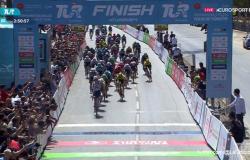The descent towards the Kanarieberg: every rider who has ever ridden a Flemish spring race knows that disaster is in the air. What makes that place so dangerous? “If you brake there, you are lost,” Tim Declercq puts his finger on the wound.
Not for the first time, the wounds are licked after the descent towards the Kanarieberg.
Last year there was a massive crash in the Tour of Flanders, including Biniam Girmay, and today there was also a horror crash in Dwars door Vlaanderen.
“What makes that descent so dangerous? Because the road is so wide,” Tim Declercq points out the first pain point.
“The general level in the peloton is also so high. You have to be in a good position towards the right bend (before going up the slope).”
“There is such enormous pressure to the front and there are so many strong riders. You cannot get into the wind too early, but also not too late.”
“Suddenly you feel: “Oops, I’m locked in.” TV viewers then wonder why you don’t move up or say that it is not difficult to be among the first 10.”
“But they overtake you there and you want to dive into a hole, because you have to sit there. But sometimes there is just no room. If you brake there, you are lost. It is and remains an extremely dangerous sport.”
“It is indeed a dangerous place,” nodded Stefan Küng, “but 9 times out of 10 it ends well. Now things have gone wrong 2 years in a row.”
“But there are still such places, such as between the Hotond and the Trieu. It is difficult to avoid. However, it is a wide road.”
“If you look for smaller roads, it is also dangerous. Unfortunately, it is part of the course, although we would rather not see it.”







